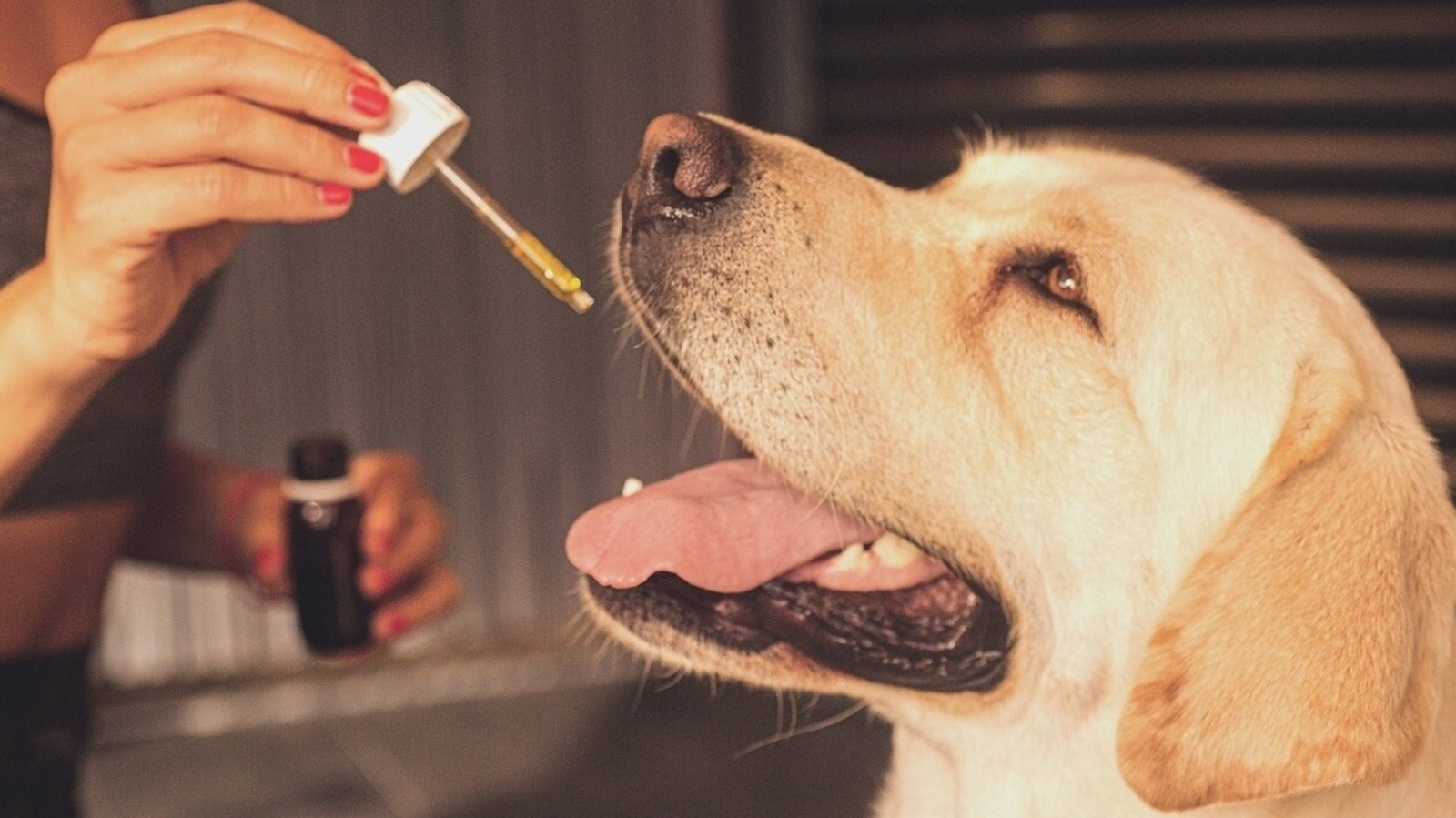Understanding the Side Effects of CBD Oil for Dogs
Introduction
CBD oil, derived from the hemp plant, has gained popularity for its potential health benefits in humans and animals alike. As more pet owners turn to CBD oil to help with their dogs’ anxiety, pain, and other health issues, it’s important to understand not just the benefits but also the potential side effects. Here’s a comprehensive look at the side effects of CBD oil for dogs.
What is CBD Oil?

CBD, or cannabidiol, is a compound found in cannabis plants. Unlike THC (tetrahydrocannabinol), another well-known compound from cannabis, CBD is non-psychoactive, meaning it doesn’t produce a “high.” CBD oil for pets is typically derived from hemp, which contains little to no THC. This distinction is crucial for pet owners, as THC can be toxic to dogs even in small amounts, causing symptoms such as lethargy, vomiting, and loss of coordination.
The growing interest in CBD oil for pets is largely due to its potential therapeutic benefits without the psychoactive effects associated with THC. Pet owners are increasingly turning to CBD oil as a natural alternative to traditional medications, seeking relief for their dogs from conditions such as arthritis, anxiety, epilepsy, and chronic pain. The endocannabinoid system (ECS) in dogs, much like in humans, plays a vital role in maintaining physiological balance, and CBD interacts with this system to promote overall well-being.
It’s important to note that while anecdotal evidence and preliminary studies suggest promising benefits, the scientific research on CBD oil for pets is still in its early stages. This means that while many dogs may experience improvements in their conditions, the response to CBD can vary significantly among individual pets. Factors such as the dog’s age, weight, overall health, and the severity of the condition being treated can all influence how CBD affects your dog.
Given the variability in response and the potential for side effects, it’s essential for pet owners to approach CBD oil with caution. High-quality CBD products specifically formulated for pets are recommended to ensure safety and efficacy. Additionally, pet owners should always consult with a veterinarian before starting their dog on CBD oil to ensure it’s an appropriate treatment and to determine the correct dosage. This careful approach helps maximize the potential benefits of CBD while minimizing any risks or adverse effects.
Potential Benefits of CBD Oil for Dogs
Before diving into the side effects, it’s worth noting why many pet owners consider CBD oil for their dogs. Potential benefits include:
- Pain Relief: CBD oil is often used to alleviate chronic pain in dogs, particularly pain associated with arthritis.
- Anxiety Reduction: It can help calm dogs with anxiety, whether it’s due to separation, loud noises, or other stressors.
- Anti-Inflammatory: CBD’s anti-inflammatory properties may benefit dogs with conditions like inflammatory bowel disease.
- Seizure Management: Some studies suggest that CBD can help manage seizures in dogs with epilepsy.
Common Side Effects of CBD Oil in Dogs
While CBD oil can offer numerous benefits, it’s essential to be aware of the possible side effects:
1. Dry Mouth
CBD can decrease saliva production, leading to dry mouth. This can result in increased thirst. Ensure your dog has plenty of water available if you notice signs of dry mouth.
2. Lowered Blood Pressure
High doses of CBD oil have been known to cause a temporary drop in blood pressure. Even if the drop is slight, it can create a brief feeling of light-headedness. Monitor your dog closely, especially after administering higher doses.
3. Drowsiness
CBD’s calming effect can lead to drowsiness, especially when used to treat anxiety in dogs. While this might be beneficial in some cases, it’s important to ensure your dog is not overly lethargic.
4. Upset Stomach and Diarrhea
Some dogs may experience gastrointestinal issues like upset stomach and diarrhea, particularly when first starting CBD oil. Gradually introducing the oil and ensuring it is given with food can help minimize these effects.
5. Changes in Appetite
CBD oil can cause changes in appetite. Some dogs may eat less, while others may experience an increase in hunger. Monitor your dog’s eating habits and adjust the dosage as necessary.
Also Read: Using CBD Oil for Dog Ear Infections
Managing Side Effects
Here are some tips to help manage potential side effects of CBD oil:
1. Start with a Low Dose
Begin with a low dose of CBD oil and gradually increase it. This allows you to monitor your dog’s response and adjust accordingly. A gradual introduction helps to minimize the risk of severe side effects and allows you to find the optimal dose that provides the desired benefits without overloading your dog’s system. Remember, each dog is unique, and what works for one might not work for another. Patience and careful observation are key.
2. Consult Your Vet
Always consult with your veterinarian before starting your dog on CBD oil, especially if your dog is on other medications or has underlying health conditions. Your vet can provide valuable guidance on whether CBD oil is suitable for your dog and can help determine a safe and effective dosage. They can also monitor your dog’s progress and make any necessary adjustments to the treatment plan. This professional input is crucial in preventing potential drug interactions and managing any pre-existing health issues.
3. Monitor Closely
Keep a close eye on your dog’s behavior and health after administering CBD oil. Note any changes and report them to your vet. Monitoring includes watching for improvements as well as any adverse effects. Look for signs of dry mouth, lowered blood pressure, drowsiness, upset stomach, or changes in appetite. Keeping a daily log of your dog’s behavior, appetite, and overall health can be helpful for both you and your vet to track progress and make informed decisions about the treatment.
4. Quality Matters
Ensure that you are using a high-quality CBD oil specifically formulated for pets. Human CBD products may contain ingredients that are harmful to dogs. Look for products that have been third-party tested for purity and potency, and make sure they are free from contaminants like pesticides, heavy metals, and molds. Reputable brands will provide a certificate of analysis (COA) that verifies the product’s contents.
5. Be Patient
CBD oil may take some time to show noticeable effects. Unlike some medications that have immediate effects, CBD may require consistent use over a period of days or weeks to see significant improvements. Patience and consistency are important, and it’s essential to give the treatment adequate time to work.
6. Be Informed
Educate yourself about CBD oil and its potential effects. Understanding how CBD interacts with your dog’s body and the possible side effects will help you make informed decisions and better manage your dog’s health. There are many resources available, including veterinary advice, scientific studies, and reputable websites dedicated to pet health and CBD.
Conclusion
CBD oil can be a valuable addition to your dog’s health regimen, offering benefits from pain relief to anxiety reduction. However, like any supplement, it’s crucial to be aware of the potential side effects and manage them appropriately. Always consult with your veterinarian and start with a low dose to ensure the best outcome for your furry friend. By being informed and cautious, you can help ensure that your dog reaps the benefits of CBD oil while minimizing any adverse effects.







